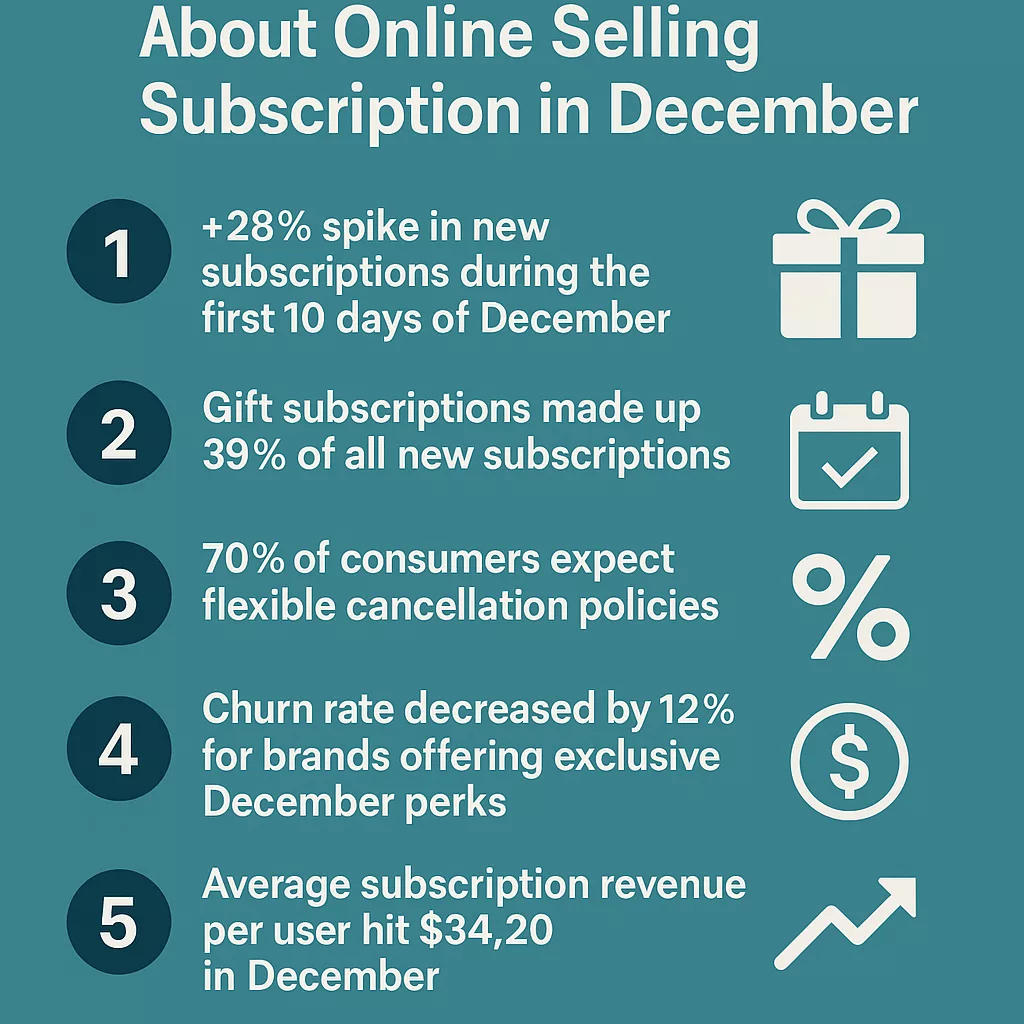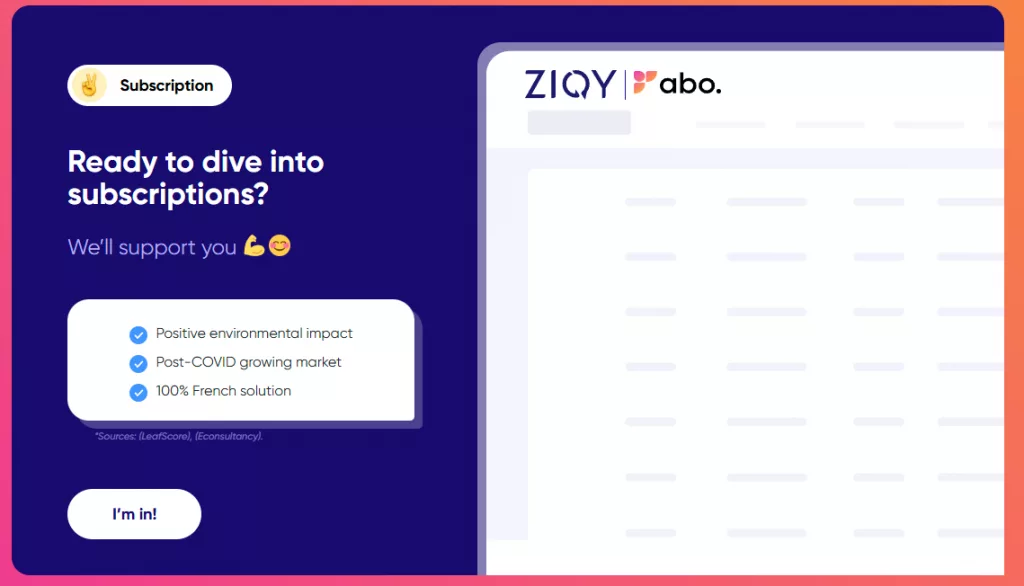
December is always a defining month in the world of online selling — and subscription-based models are no exception. With holiday shopping at its peak, businesses see a unique opportunity to scale recurring revenue, increase customer lifetime value, and attract new subscribers with timely offers. But what really happened in December? Here are five key figures that reveal where the online subscription market stands as we close the year.
1. +28% spike in new subscriptions during the first 10 days of December
Consumer behavior in early December shows a consistent pattern year after year: a sharp increase in subscriptions, especially for giftable services. In 2024, platforms offering subscription boxes (beauty, food, books, etc.) saw an average 28% rise in new sign-ups during the first 10 days of December compared to November.
This trend is driven by holiday promotions, flash sales, and the growing popularity of gifting subscriptions instead of physical products. For e-commerce businesses, this is the golden window to push acquisition.
2. Gift subscriptions made up 39% of all new subscriptions
Gifting has become a major revenue stream for online sellers during the holiday season. In December, nearly 4 out of 10 new subscriptions were purchased as gifts, especially in the sectors of wellness, streaming, meal kits, and niche hobbies.
What’s notable is that many of these gift subscriptions convert into long-term recurring users after the trial or initial period ends — offering a rare mix of seasonal cash flow and potential long-term CLTV growth.
3. 70% of consumers expect flexible cancellation policies
While subscription models offer predictability for brands, they demand flexibility from consumers — especially during holiday season. In a recent survey conducted in December, 70% of online shoppers said they were more likely to subscribe if the service allowed easy cancellations, pause options, or try-before-you-pay models.
This aligns with broader shifts in consumer expectations: people want value and convenience, but also control. Businesses that advertised transparent cancellation policies saw a 15–20% higher conversion rate than those that didn’t.
4. Churn rate decreased by 12% for brands offering exclusive December perks
Retention is the other side of the subscription game, and December offers a critical opportunity to reduce churn. Brands that offered limited-edition products, exclusive discounts, or loyalty points to their active subscribers saw their churn rate drop by 12% during the month.
These perks work as seasonal anchors, reminding customers why they subscribed in the first place — and rewarding them for staying. It’s also a strong reminder that retention starts with value reinforcement, not just customer service.
5. Average subscription revenue per user hit $34.20 in December
Finally, let’s talk money. Across major verticals like fashion, tech, home, and wellness, the average revenue per subscriber (ARPU) reached $34.20 in December 2024 — the highest recorded this year. This figure reflects a mix of upsells, cross-sells, bundled offers, and extended commitments from holiday shoppers.
Compared to the yearly average of $26.50, this marks a 29% increase in monetization performance. It confirms December as a pivotal moment not just for acquisition, but for maximizing short-term revenue without compromising long-term value.
These five figures tell a clear story: December is not just about selling more, it’s about selling smart — with subscriptions that meet emotional, practical, and financial expectations of modern consumers. For brands operating online, understanding these trends can mean the difference between a seasonal spike… and a sustainable growth engine.





